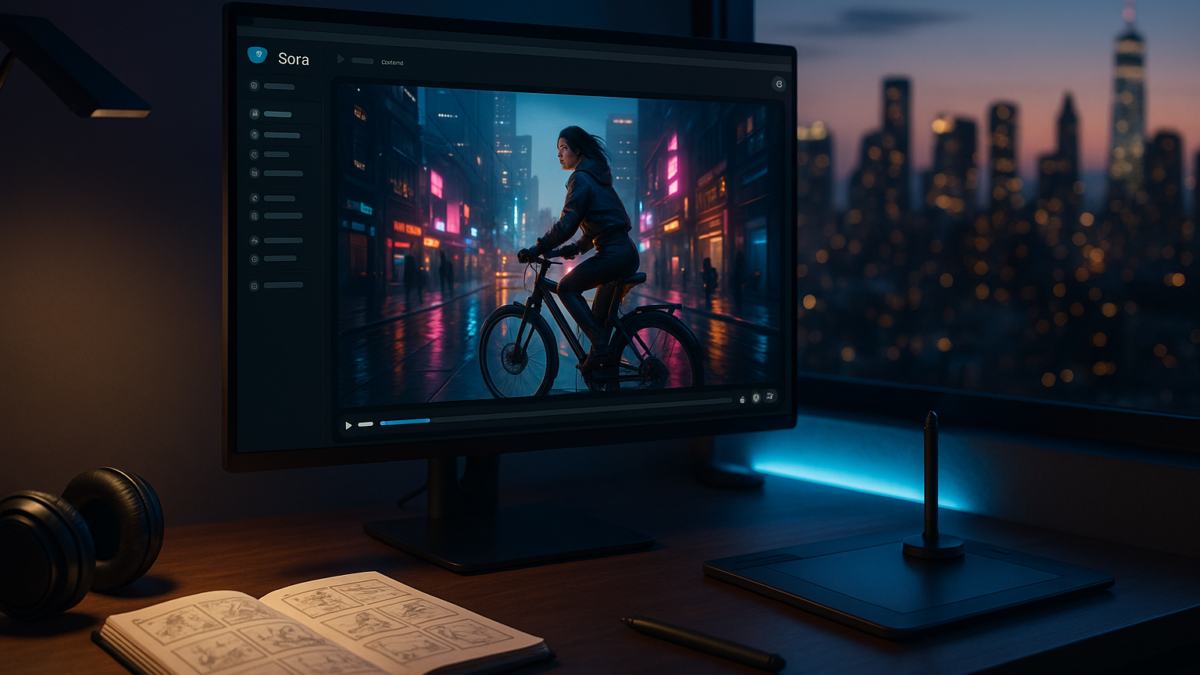Sora by OpenAI: Transforming Text into Realistic Videos
Table of Contents
Introduction
In the rapidly evolving landscape of artificial intelligence, OpenAI has introduced Sora, a cutting-edge model that converts textual descriptions into realistic videos. Building upon the foundations laid by predecessors like DALL·E, Sora represents a significant leap in generative AI, offering users the ability to create dynamic visual content with unprecedented ease.
What is Sora?
Sora is a text-to-video AI model developed by OpenAI, designed to generate high-quality videos from textual prompts. Unlike traditional video creation methods that require cameras, actors, and extensive editing, Sora simplifies the process by allowing users to input descriptive text, which the model then transforms into a corresponding video clip.
How Does Sora Work?
Sora operates using advanced machine learning techniques, including diffusion models and transformer architectures, to interpret and visualize textual input. The model processes the semantics of the provided text, understanding the context, objects, and actions described, and then generates a video that aligns with the prompt. This involves:
- Semantic Understanding: Grasping the meaning and context of the text.
- Visual Synthesis: Creating images that represent the described scenes.
- Temporal Coherence: Ensuring that the sequence of images forms a smooth and logical video.
Key Features of Sora
- Text-to-Video Generation: Sora can create videos up to 60 seconds in length, maintaining high visual fidelity and coherence with the input prompt. This feature enables users to bring their ideas to life without the need for traditional video production resources.
- Multi-Modal Input: Beyond text, Sora supports image and video inputs, allowing users to extend or modify existing content. This flexibility enhances creative possibilities, enabling tasks like video editing, style transfer, and content remixing.
- High-Resolution Output: The model is capable of generating videos in various resolutions, including 1080p, ensuring that the output meets professional quality standards suitable for diverse applications.
- Aspect Ratio Flexibility: Sora supports multiple aspect ratios, such as widescreen, vertical, and square, catering to different platforms and content requirements.
Applications of Sora
Sora’s capabilities open up numerous possibilities across various industries:
- Film and Entertainment: Filmmakers and content creators can use Sora for storyboarding, concept visualization, and even generating entire scenes, reducing production time and costs.
- Marketing and Advertising: Marketers can quickly produce engaging video content tailored to specific campaigns, enhancing audience engagement and brand storytelling.
- Education and Training: Educators can create illustrative videos to explain complex concepts, making learning more interactive and accessible.
- Art and Design: Artists and designers can experiment with new forms of expression, using Sora to visualize ideas that would be challenging to produce through traditional means.
Ethical Considerations and Limitations
While Sora offers remarkable capabilities, it’s essential to acknowledge its limitations and ethical implications:
- Content Restrictions: To prevent misuse, Sora includes safeguards against generating content that is violent, hateful, or sexually explicit.
- Accuracy and Realism: Although the model produces high-quality videos, it may occasionally struggle with complex physics or nuanced human behaviors, leading to less realistic outputs.
- Misinformation Risks: The potential for creating convincing fake videos raises concerns about misinformation and the need for responsible usage.
OpenAI addresses these issues by implementing content filters and encouraging users to adhere to ethical guidelines when using Sora.
Future Developments
OpenAI continues to refine Sora, aiming to enhance its capabilities and accessibility. Future updates may include:
- Extended Video Lengths: Allowing for longer video generation to accommodate more comprehensive narratives.
- Improved Realism: Enhancing the model’s understanding of physics and human interactions for more lifelike videos.
- Integration with Other Tools: Combining Sora with other AI models and platforms to create a seamless content creation ecosystem.
Conclusion
Sora represents a significant advancement in AI-driven content creation, democratizing video production and enabling users to transform textual ideas into vivid visual narratives. As the technology evolves, it holds the promise of reshaping industries and unlocking new creative potentials.
You May Also Like: From Due Diligence to Deal Flow: How Hebbia Streamlines Legal & Financial Ops





